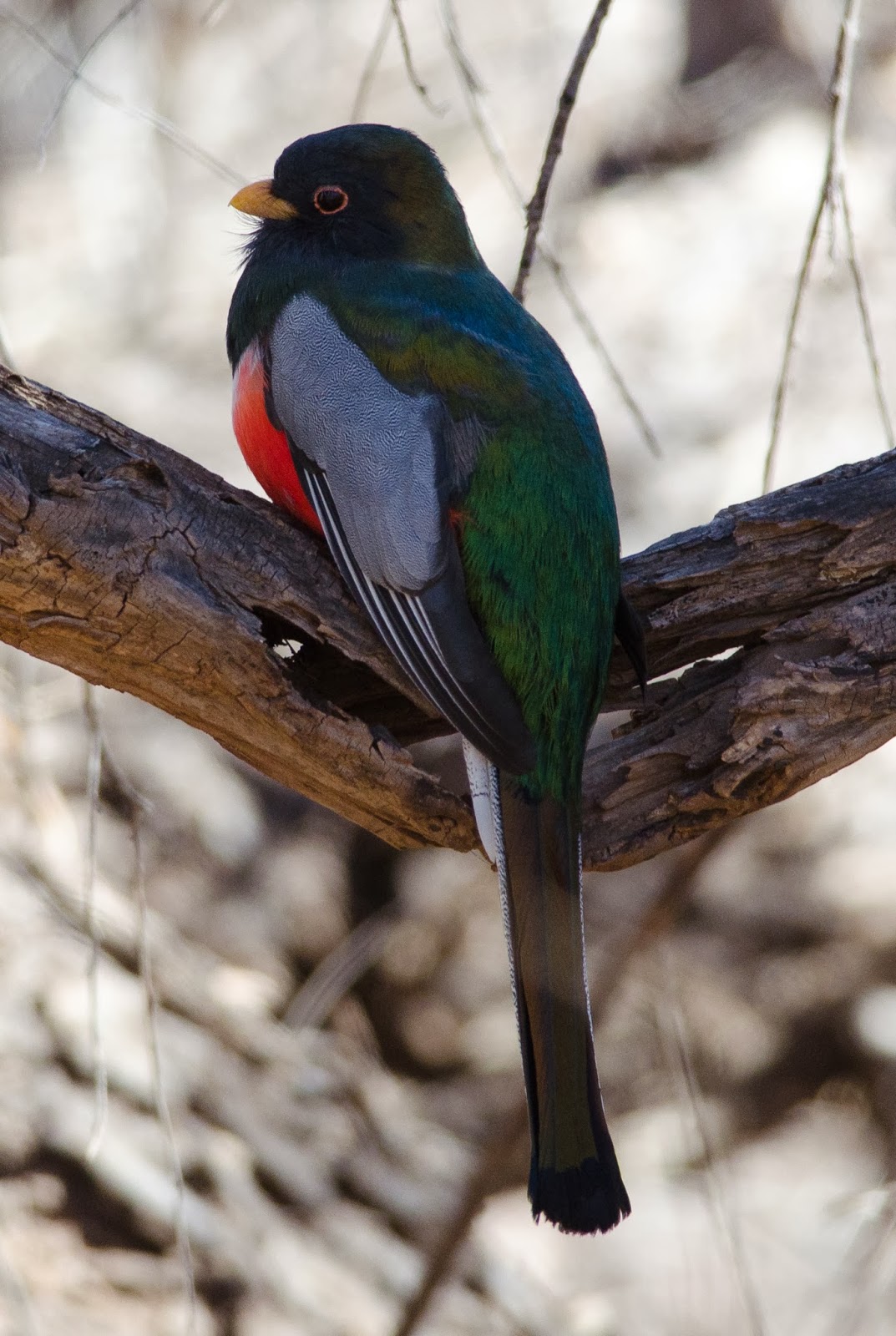This past weekend, I had the privilege of attending the annual AZFO (Arizona Field Ornithologists) meeting, which was held in Lake Havasu, AZ this year. This was the first annual event by AZFO that I have attended and I found it to be very worthwhile and informative. Besides attending an all day meeting on Saturday, we also had the opportunity to do some birding as well. The original plans called for a pontoon ride out into the lake itself to observe much of the waterfowl to be found on the vast lake. Unfortunately, Mother Nature altered those plans with a very windy day that prevented most boats of any kind to even go out on the water. So we settled by doing a bit of birding along the shores and some of the points looking out over the lake. But even on land the winds did create a few difficulties with the viewing of birds (And photography was even tougher!).
Having to bird waterfowl from the shoreline, the photo opportunities were greatly reduced, so we will have to settle for less than what I had hoped for. We found 3 species of gulls on the lake and thankfully all 3 were spending most of their time near the shoreline. We found a single 1st year Herring Gull and even though its plumage is far from looking like an adult, the brown and white markings on this bird is quite beautiful.
Herring Gull
Gulls tend to be one of the most difficult families of birds to identify, mainly due to the fact that it can take 2, 3 or even 4 years for most of these gulls to attain their adult plumage. Then to confuse matters even more, many of the gull species hybridize with each other, making many of the field marks even more difficult. The photos below show the differences in a first winter and second winter Ring-billed gull. The second winter bird has also captured a mollusk of some kind and was not about to give it up to any of the other gulls. The mollusk eventually became a snack for the gull.
Ring-billed Gull - 1st winter
Ring-billed Gull - 2nd Winter
A few more waterfowl that I was able to capture were the Pied-billed Grebe and the Eared Grebe. Pied-billed Grebes are quite common, but they are one of the most endearing. The Eared Grebe was displaying a behavior that I had not seen before. It was chasing insects that were flying near the water surface and snatching them in mid-air. I had never thought they would feed on insects, but guess they are opportunistic when they get the chance.
Pied-billed Grebe
Eared Grebe
Enough of the water birds, now lets move on to some of the smaller birds. During the short time we had early on Saturday morning, we had a Black Phoebe, a flock of Yellow-rumped Warblers and a Song Sparrow that presented themselves well before the camera. The Black Phoebe was a bit of a challenge trying to focus between the grass blades and in fact, one of the grass blades is a blur in front of the bird. The Yellow-rumped Warblers actually allowed us some good looks, and the Song Sparrow was in some pretty deep shade, so I had to bump up the ISO for the photo.
Black Phoebe
Audubon's Yellow-rumped Warbler
Audubon's Yellow-rumped Warbler
Song Sparrow
One more bird photo and this is one of a female Great-tailed Grackle. Not a bird most people enjoy photographing and while I have got a few photos of males of this species, this is actually the first photo I have taken of one of the females. When they pose and the lighting is just right, it is hard to ignore and a photo or two is sometimes worth the effort.
Great-tailed Grackle - female
Going to end this post with a couple of shots of insects. One is a very colorful Rambur's Forktail Damselfly and the other is a Common Buckeye Butterfly. My lens is definitely not the best lens for photographing these last 2 as I have to stand back about 12 to 15 feet to zoom in on them. A macro lens would be much better, but changing lens in the field is a bit of a challenge.
Rambur's Forktail Damselfly
Common Buckeye Butterfly





























































